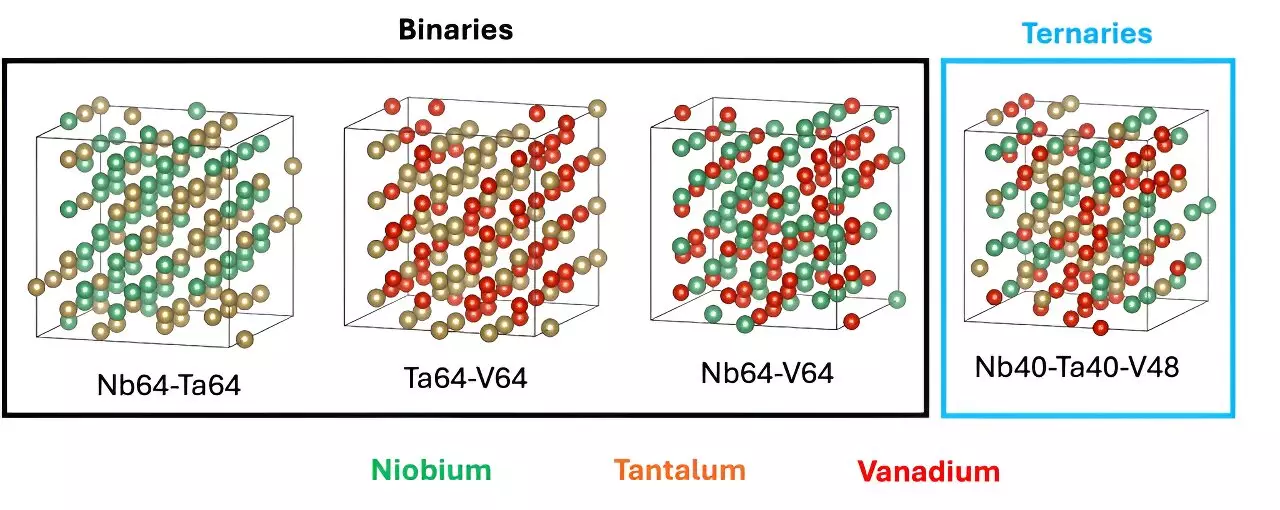The journey towards realizing effective and reliable nuclear fusion technology is paved with groundbreaking research, particularly in the field of materials science. Recently, scientists at Oak Ridge National Laboratory (ORNL) have made significant strides by employing artificial intelligence (AI) to identify novel alloy combinations that could serve as essential shielding materials in fusion reactors. This innovative approach aims to enhance the performance of nuclear fusion facilities and addresses the urgent need for new materials capable of withstanding extreme temperatures and magnetic environments.
Under the leadership of Massimiliano Lupo Pasini, data scientists at ORNL have embarked on a pioneering project to utilize AI in materials discovery, specifically focusing on refractory high-entropy alloys. This endeavor is part of a broader framework known as Artificial Intelligence for Scientific Discovery (AISD), which was initially championed by former AI Initiative Director David Womble. The project marks a remarkable evolution in the way researchers are tackling material development for nuclear fusion, shifting from traditional methods to a data-driven, AI-assisted approach.
The findings of this research were published in the journal Scientific Data and highlight the critical need for new alloy compositions. Historically, tungsten-based alloys served as the standard for shielding in nuclear fusion applications. However, while these materials exhibit excellent high-temperature resistance, they often fall short in terms of shielding consistency, limiting their effectiveness in real-world fusion reactors.
The primary challenge in alloy discovery lies in the nearly infinite combinations of metallic elements that could potentially yield better materials for high-temperature applications. Lupo Pasini and his team recognized that conventionally reliant trial-and-error processes would not suffice and instead integrated AI to expedite the identification of viable candidates through computational analysis. The AI model developed analyzed different metallic combinations, enabling researchers to hone in on three promising elements for further testing.
Working alongside colleagues such as German Samolyuk, Jong Youl Choi, Markus Eisenbach, Junqi Yin, and Ying Yang, the team developed an extensive database that served as a foundation for their AI model. The infusion of AI not only streamlines the process by which materials are evaluated but also opens up new avenues for innovation. These advancements are crucial in accelerating progress in the development of materials that meet the stringent performance criteria required for usage in fusion reactor components.
Despite the significant potential of AI in alloy discovery, the researchers faced multiple challenges. One notable issue was the extensive computational resources required to generate the necessary data. Achieving the computational demands of their research required substantial hours on advanced supercomputers, namely the Perlmutter and Summit systems, which are notable for their capacities in running simulated models and processing massive datasets.
Moving forward, the research team aims to build upon this initially generated data to refine their AI model further. According to Lupo Pasini, the next phase will involve training the system to explore combinations of the six target elements at various concentrations, thereby paving the way for the identification of game-changing materials for fusion applications. The potential outcomes extend beyond mere alloy discovery; they could fundamentally reshape the technological landscape in nuclear fusion.
The fusion of AI and materials science exemplifies a transformative paradigm in the development of nuclear fusion technologies. With ambitious projects aimed at creating highly effective alloys, ORNL’s initiative signifies a commitment to overcoming the traditional challenges faced in material discovery. By harnessing the power of AI, researchers not only hope to expedite their processes but also aspire to achieve breakthroughs that could ultimately lead to a sustainable and transformative energy source for the future. As the study continues to evolve, it will be fascinating to observe the innovations that emerge from this intersection of fields, potentially reshaping the future of energy generation.

